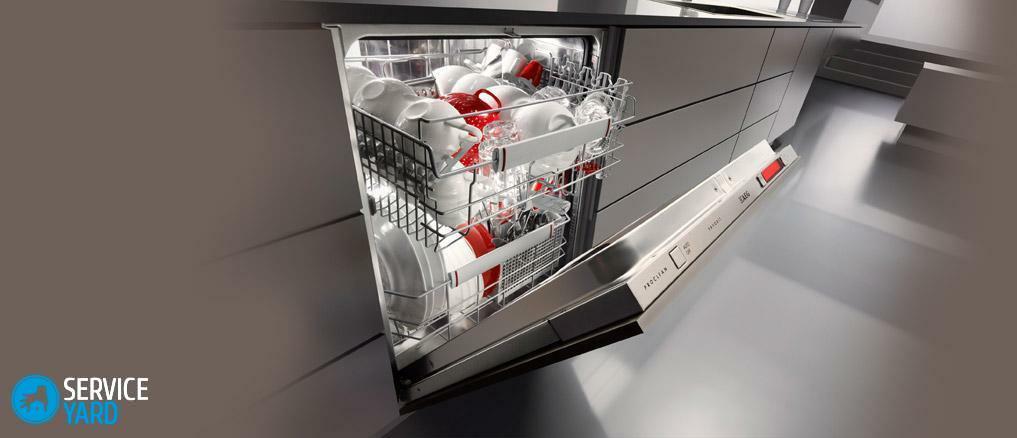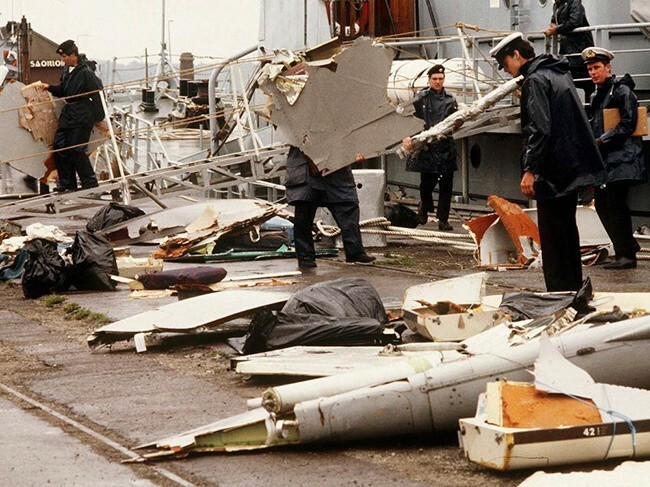
- Dishwasher
- How it works
- Repair and maintenance of dishwashers at home
Dishwashers in many ways make life easier for modern housewives. Therefore, it is important to understand how the dishwasher works, in order to correctly choose and, if necessary, to correct the malfunction of this technique. Otherwise - even with a minor malfunction, you will again have to wash all the plates, pans, appliances manually, waiting for the master to arrive at your home. This is far from a way out of the situation, and not at all what every housewife expects from buying such useful kitchen appliances. So, let's look at the principle of the dishwasher.
to the table of contents ↑Dishwasher
Each dishwasher has a standard set of parts that ensure the correct operation of the device.
Important! Individual models differ from others by an additional set of functions that we will not consider, since they are so specific that it is not possible to verify their operation on site.
In order to familiarize yourself with the internal device, it is enough to open its front wall. The list of the main units of the dishwasher unit includes:
- The control panel is located on the front of the machine. It contains the controls: a timer, a screen( if the model provides it), a set of buttons.
- Board with a processor for program management.
- Electric motor - starts the entire internal system.
- Dispenser for washing aids.
- The air path required for the dryer.
- Baskets - for cutlery, plates, cups, etc.
- Rockers - provide feeding and even distribution of detergent and water on the entire kitchen utensils loaded in the machine.
- Pump - responsible for supplying water from the water intake.
- Filter system and water softener - necessary for water purification from the system before using it for its intended purpose.
- Pallet and drainage - the system provides drainage of waste water.
- TEN - is responsible for heating the water to the set temperature.
- Counterweight - ensures the stability of the unit.
- Water supply valve - regulates the volume of water flow.
- Sprayers consist of a system of tubes and sprayers. Through them, water flows into the machine under pressure.
- Condenser.
- The detergent drawer is normally located on the wall of the appliance door.
- The ion exchanger is a reservoir that contains a water softening resin.
- Capacity for salt.
- The float regulator is the primary means for protecting against leaks.
- Drain hose and nipples, as well as the remaining pipes and hoses that connect the system as a whole.
Differences in the
Some functions are not inherent in all brands of dishwashers. The following list represents the features of the dishwasher:
- The heat exchanger is a plastic tank that is large enough to hold cold water and is located next to the metal tank. There is to reduce energy consumption when drying dishes.
- Sensor for determining the purity of water.
- Sensors for the presence of all detergents. Present in many modern machines.
- Fan and additional element for heating. The presence of these elements means the organization of turbo-drying. But there is such an innovation not in all models. So, any of the possible devices of the Bosch dishwasher does not have a similar function.
- Drying sensor.
- Holder for wine glasses.
- Reservoir with minerals - used for drying.
- Sprayer for washing trays.
Basis of
The basis for the recruitment of these parts, both basic and optional, is a sealed metal casing. From the inside, it is coated with a stainless alloy that is not sensitive to temperature changes and the effects of detergents. It is also equipped with sound and thermal insulation.
to the contents ↑How
worksThe principle of the dishwasher is hidden from the eyes of an outsider. All the work is presented in the form of loading dishes into the basket and pressing a pair of buttons. In this case, you can strongly recommend to understand what happens inside this unit after pressing the "Start" button.
In a generalized form, the dishwasher works as follows:
- The water drain starts.
- Bay of clear water.
- Starts the washing program.
- Add detergents.
- Heating water to the desired temperature.
- Washing dishes yourself.
- Draining of water.
- Gulf of rinse water.
- Rinsing.
- Draining the water after rinsing.
- The last point is drying dishes with a fan or condensing drying.

Washing programs
There are many programs that are used for dishwashing. All of them can be divided into 3 main categories:
- Programs that indicate what additional actions to perform before and after the main wash. For example, soaking.
- Temperature regimes - the degree of water heating.
- The time for performing these or other manipulations - can vary according to the basic settings or the personal preferences of the user. Everything depends on the specific model.
The dishwasher operates after installing all the programs according to the following principle:
- The microprocessor checks the closing of the door, and then commands the pump.
- After the pump is completed, water is dialed, which is controlled by a special sensor.
- After receiving water under pressure on the impeller, the latter starts to rotate. At the same time, a dispenser opens with a detergent and it enters the interior of the device.
- Upon completion of washing and drying, the sensor triggers, the signal of which instructs the microprocessor to open the front wall lock and inform the end of the process.
Repair and maintenance of the dishwasher at home
Now that we have learned all about the dishwasher, let's take a look at some of the most common problems that arise with this device and how to solve them.
White or dirty stains on the
This problem occurs if you load too much( white stains) into the device, or vice versa - a little( dirty stains), detergent, salt or rinse aid.
To solve this problem, it is necessary, respectively, to reduce or increase the dosage.
Poor discharge of water
This occurs at a time when filters are clogged with food residues. It is recommended to clean them no less than after 2 washing cycles.
Excess foam
An excess of foam occurs when the rinse aid is loaded more than normal. This problem is solved by adjusting the machine dispenser and increasing the amount of powder, which is a remarkable defoamer.
Other causes of
Among the less common reasons for poor performance of the device can also be:
- Improper placement of dishes.
- A malfunction of the impeller or its inability to spin due to excessive loading of the device.
- The detergent supply has been blocked or it has ended.
- No water is supplied - to find out the cause, you need to check the nozzles, if necessary, clean them with a stream of water, before removing them from the device.
- Wrong mode selection.
Diagnosis of faults
In the event that you are sure that the reason for the poor performance is not in the incorrect operation, and checking all the previous points this confirms, most likely, there were technical problems.
Among them the most common:
- Extraneous sounds during operation - may indicate a breakdown of bearings, spray, main or drain pump units.
- The lack of water in the chamber - most likely, the exhaust valve is broken: it is necessary to replace it.
- Stopping the machine in the middle of the cycle means, most likely, a faulty pump. Also check the recirculation filters, the water heater and the water intake path.
- Wash occurs in cold water - the machine probably does not have a temperature sensor, or it broke, so the programmer did not notice that the system failed. Also, the culprits can be out of order TEN or automatic heating.
If the machine does not work at all, then the following factors may serve as the cause:
- Unclosed door.
- No water in the chamber.
Important! If the machine does not turn on and beats, most likely, there was a break in the electrical circuit. Check all power cords.
Now you know how the dishwasher works, what could be the cause of this or that malfunction. So - you easily solve those problems that arise in such situations. Do not forget to consult the instruction manual, adhere to the basic safety rules, and most of the problems you can solve yourself without resorting to the help of a specialist.



